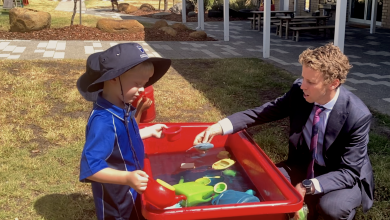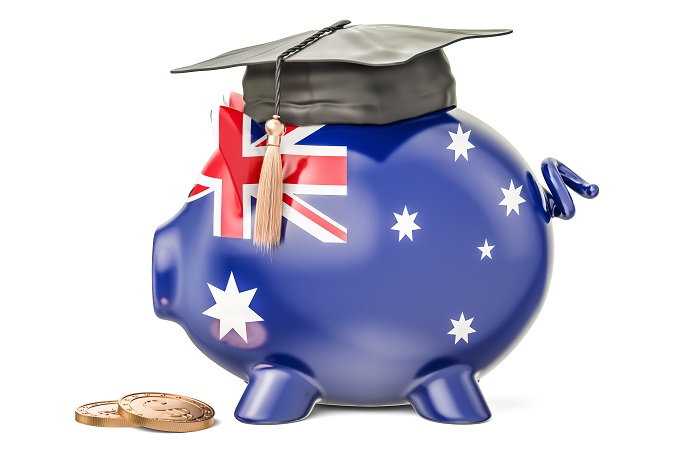Inclusive education during COVID-19: Lessons from teachers around the world
COVID-19 has disrupted education systems on a global scale, creating unexpected challenges.

Approximately 1.6 billion children around the world have been unable to attend school due to COVID-19 lockdowns, with schools required to make rapid adjustments in the move to online teaching and learning.
The pandemic has increased the educational divide for many children and young people across the world.
For students with a disability and additional learning needs, the move to remote learning has presented additional challenges, including barriers to engaging with technology, reduced access to educational supports and individualised learning interventions, and a loss of social connections.
In response to these challenges, many teachers have rapidly adjusted their practice, and developed innovative approaches to providing inclusive education to all students.
Inclusive education means that every child is valued, and receives a high-quality and equitable education.
In partnership with research teams in Australia and seven countries (Austria, Bangladesh, India, New Zealand, Italy, Canada and Spain), researchers from Monash University are conducting a study to identify how teachers are responding to the challenges to inclusive education posed by COVID-19, and in particular to share examples of approaches to good practice with teachers around the world.
Monash researchers conducted interviews with teachers, school leaders, education support staff, students and parents to learn more about the adaptations that schools and teachers have made in order to provide inclusive education during COVID-19.
This research revealed a number of findings that are consistent in Australia and several other countries.

Schools and teachers who have invested additional efforts in building strong connections with and between students and their families reported improved engagement with all students, including those with additional learning needs.
Teachers reported how COVID-19 has provided opportunities to strengthen partnerships with parents, including greater communication regarding students’ learning and wellbeing. They also described the importance of their role in creating strong connections with their students as a way of building students’ social and emotional wellbeing.
Many parents described how much they’ve valued the increased communication with teachers during COVID-19, reporting a greater awareness of their child’s learning needs.
Students described how much they valued their teachers’ efforts to create learning experiences that were fun and helped them connect with both teachers and other students.
Education support staff, in particular, described the importance of their role in keeping students with additional learning needs connected to school and to peers during COVID-19, using a range of strategies.
Inequalities in student access to technology during COVID-19 have been widely reported. For many students with additional learning needs, the increased reliance on technology during COVID-19 has contributed towards further challenges.
Our research identified schools that have worked together with families to ensure all students have access to the technology they need to participate in remote learning report increased engagement of young people. For some families this may involve access to the internet, or to devices such as laptops or tablets.
In addition, strategies such as providing students with teachers’ or education support staff phone numbers should they need additional support, and ensuring online lessons are recorded so students can watch them in their own time repeatedly as needed, were described as being important.
Some education support staff described how they would make contact with students by telephone prior to online lessons to talk through the learning goals of the lesson, in addition to phone or email contact after lessons to provide any other support that might be needed.

Most educators described the importance of strong school leadership during COVID-19 in supporting teachers and students.
This involves clear and regular communication with staff and the broader school community, including information that is accessible to culturally and linguistically diverse students and their families.
Teachers also described the importance of “distributed leadership”, which builds on the strengths of the broader school community and empowers teachers to use initiative to identify new approaches to teaching and learning.
Our participants frequently reported two critical support or leadership practices that made teachers’ jobs easier during COVID 19. These were school leaders providing additional time to teachers to plan teaching activities, and giving more autonomy to teachers.
The importance of schools responding flexibly to the needs of students and teachers was described as being important. Teachers who felt supported by their colleagues, and who described working in effective teams, reported that they were better able to meet the needs of their students, and also experienced less burnout.
Teachers taught in small teams and supported each other with lesson planning and sharing of school resources. It’s something that effective inclusive schools have always done, but the need to do team teaching and collaborating became very critical during COVID 19.
Similarly, parents who reported that the school was responsive to the individual needs of their child and family, such as by making adjustments to teaching and learning plans, providing additional resources, or by facilitating access to onsite learning where required, described more positive learning experiences for their children during COVID-19.
Some teachers described the need for flexibility in responding to the changing needs of students during remote learning, and the importance of schools in supporting teachers and parents to respond to these needs.

Parents and teachers described how home learning increased the engagement of some students with additional learning needs in education, by allowing greater flexibility and reducing the sensory and social demands of the school environment.
For other students, home learning created greater difficulties in engaging with school. Teachers acknowledged that a flexible approach that takes into account the individual learning needs of each student was particularly important during COVID-19.
Teachers globally described how their strong passion for the vocation and commitment to help students experience positive learning outcomes has enabled them to cope with the challenges associated with COVID-19.
Almost all teachers have reported some significant positive changes for some students who were disengaged prior to COVID-19. A large majority of these students were asking more questions and contacting the teachers more frequently. It’s allowed them to make better social connections, and is something most teachers thought could be maintained beyond COVID-19.
Teachers globally described how their strong passion for the vocation and commitment to help students experience positive learning outcomes has enabled them to cope with the challenges associated with COVID-19.
We heard many examples of how the passion and commitment of teachers and school staff made a real difference in the lives of young people and their families during COVID-19, as well as providing the motivation to research and apply new and innovative approaches in order to best support students’ learning needs.

These findings overall suggest that despite the many challenges, schools and teachers have responded with creativity and flexibility to providing inclusive education during COVID-19.
Opportunities exist for school systems across the world to learn from each other and to build on the learnings gained during this time to further strengthen approaches to inclusive education for all students.
We must not forget that teachers are humans (parents, and also have kids who are doing home schooling), and they are also going through the same pandemic challenges.
While teachers are supporting our children diligently, we should acknowledge the outstanding contributions they’re making in keeping our communities running during this pandemic. We must continue to support them in whatever way possible.







